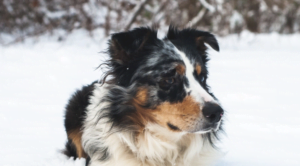Adventuring with your furry friend is an exhilarating experience, but just like humans, dogs can encounter mishaps and injuries along the way. Whether you’re hiking through rugged terrain or simply enjoying a stroll in the park, knowing how to administer first aid to your dog can make all the difference in ensuring their safety and well-being. In this guide, we’ll explore essential first aid techniques for dogs, from common injuries to emergency situations, empowering you to be your pet’s first responder in times of need.
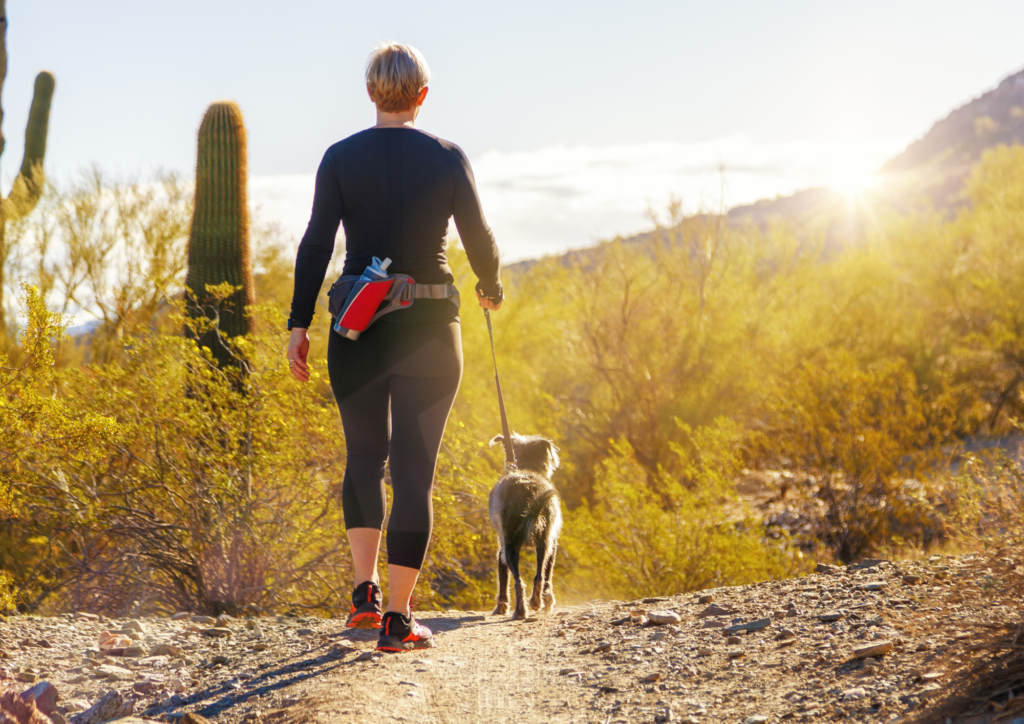
Understanding Common Dog Injuries:
Before delving into first aid procedures, it’s crucial to familiarise yourself with the types of injuries that dogs are prone to. Some common injuries include:
- Cuts and Scrapes: Dogs can easily get cuts and scrapes from running through rough terrain or encountering sharp objects.
- Sprains and Strains: Overexertion or sudden movements can lead to sprains or strains in your dog’s muscles or joints.
- Heat Exhaustion: Dogs can quickly overheat, especially in hot weather or during intense physical activity.
- Fractures: Trauma or accidents can result in broken bones, which require immediate attention.
- Insect Bites and Stings: Bees, wasps, and other insects can cause painful reactions in dogs, leading to swelling and discomfort.
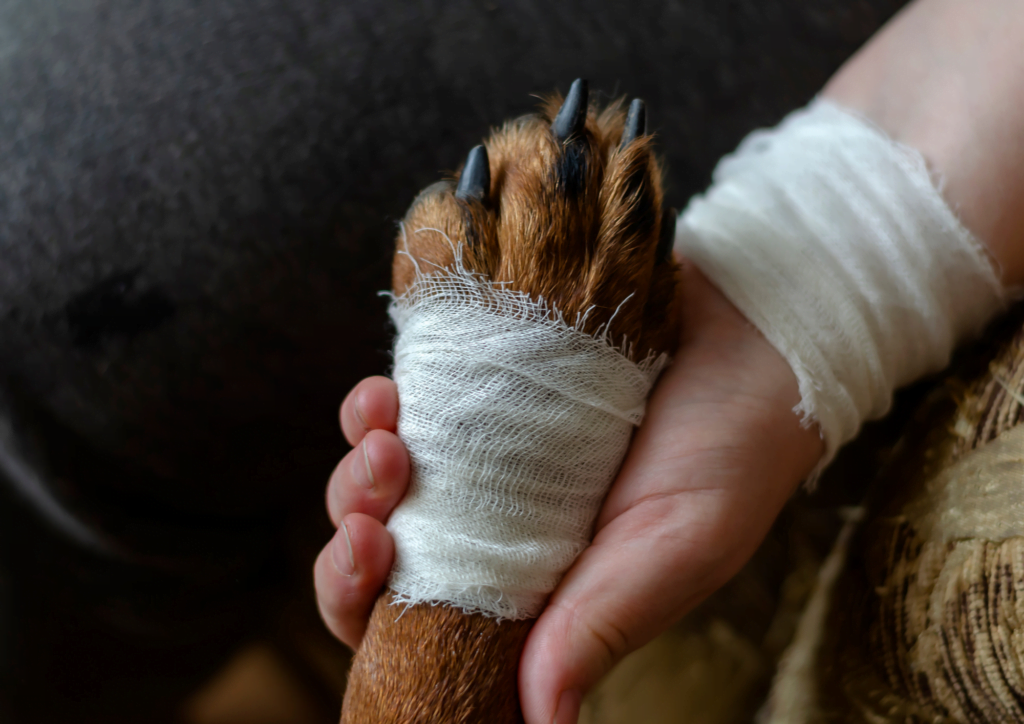
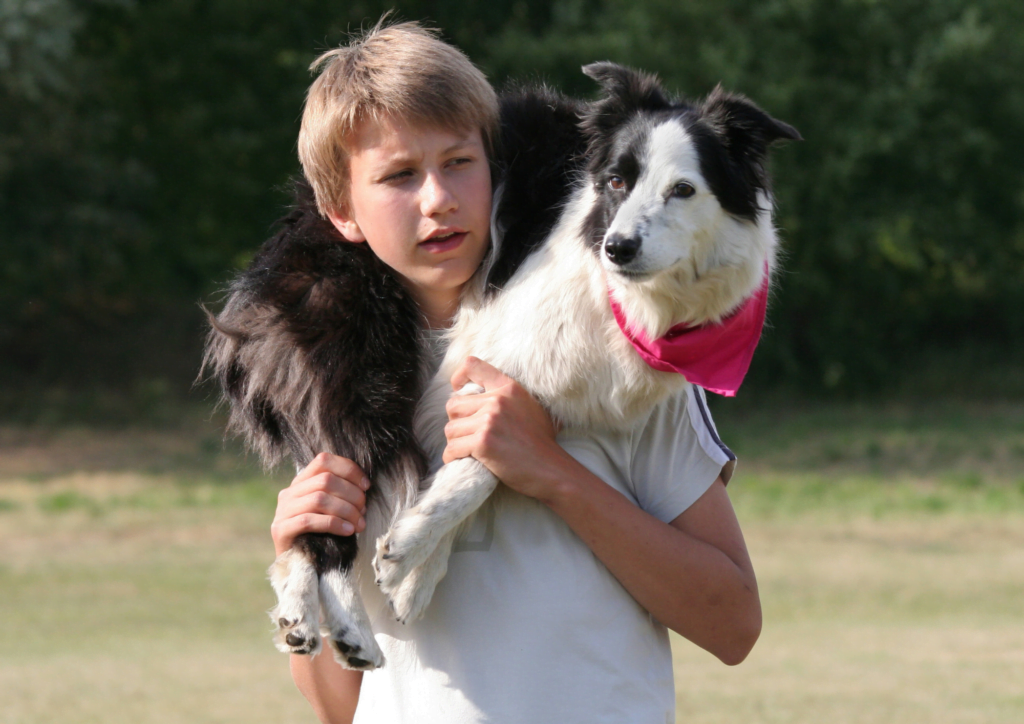
First Aid Techniques for Dogs:
When your dog sustains an injury, prompt action is key to preventing further complications. Here’s what you can do:
- Assess the Situation: Before administering first aid, evaluate your dog’s condition and the severity of the injury. Remain calm to keep your dog reassured.
- Control Bleeding: If your dog is bleeding, apply gentle pressure to the wound using a clean cloth or bandage. Elevate the injured area if possible to reduce blood flow.
- Clean the Wound: Rinse the wound with clean water to remove debris and bacteria. Avoid using hydrogen peroxide or alcohol, as they can be harmful to your dog’s skin.
- Bandage the Injury: If the wound is minor, apply a sterile bandage or gauze to protect it from further contamination. Secure the bandage firmly but not too tight.
- Treat for Shock: In cases of severe injury or trauma, your dog may go into shock. Keep them warm and comfortable while seeking veterinary assistance.
- Address Heat Exhaustion: If your dog shows signs of overheating, such as excessive panting or weakness, move them to a shaded area and offer water. Use cool, wet towels to lower their body temperature gradually.
- Splint Fractures: If you suspect a fracture, stabilise the injured limb using a splint made from cardboard or a rolled-up magazine. Avoid putting pressure directly on the fracture.
- Monitor Breathing: In emergency situations, ensure that your dog’s airway is clear and monitor their breathing. Perform CPR if necessary, following guidelines for dogs.
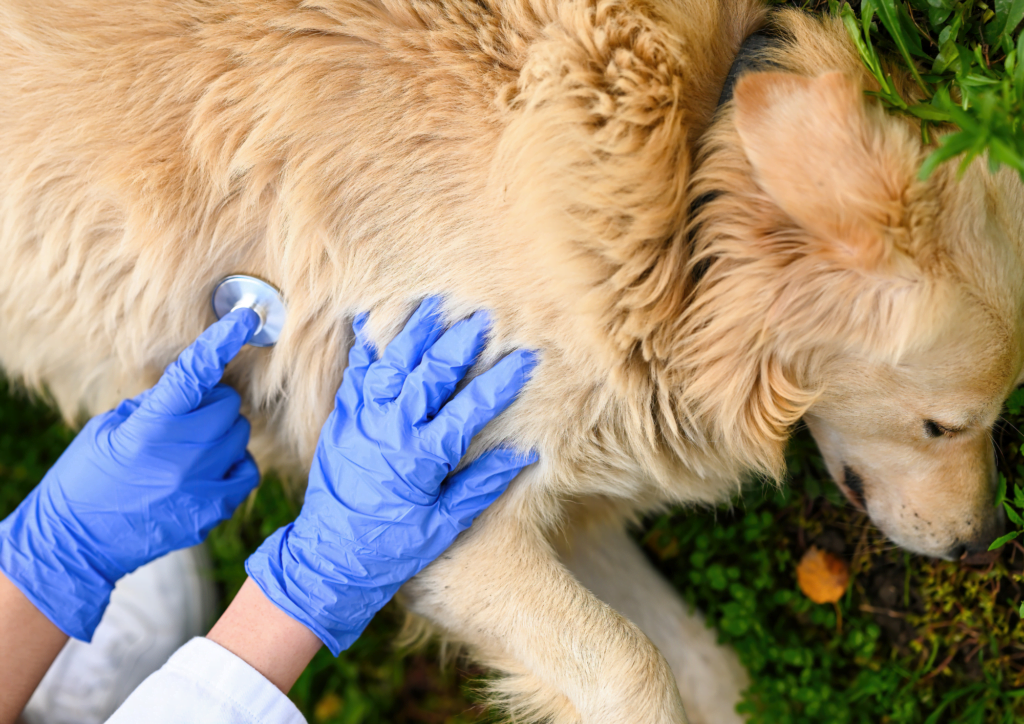
First Aid on Adventures:
When exploring the great outdoors with your dog, being prepared can make all the difference. Here are some additional tips for first aid on adventures:
- Pack a First Aid Kit: Carry a portable first aid kit containing essentials such as bandages, antiseptic wipes, tweezers, and a digital thermometer.
- Stay Hydrated: Keep your dog hydrated during outdoor activities by providing access to clean water at regular intervals.
- Watch for Signs of Discomfort: Pay attention to your dog’s behaviour and body language. If they seem hesitant or in pain, take a break and assess for injuries.
- Protect Against Pests: Use flea and tick prevention products to safeguard your dog against insect bites and infestations.
- Know Your Limits: Be mindful of your dog’s physical capabilities and avoid pushing them beyond their limits. Take breaks as needed and adjust your pace accordingly.
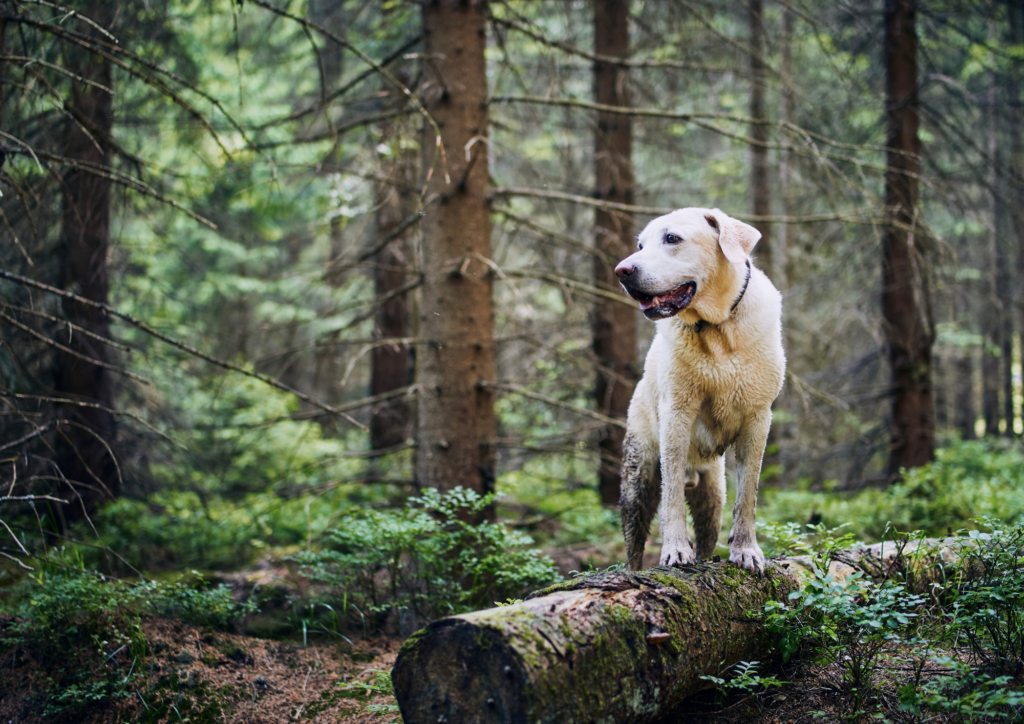
Administering CPR (Cardiopulmonary Resuscitation) to your dog can be a crucial skill in saving their life in emergency situations. Here’s a step-by-step guide on how to give your dog CPR:
- Assess the Situation: Before starting CPR, ensure that the environment is safe for both you and your dog. Check for any obstructions in the airway and ensure that the area is clear of hazards.
- Check for Responsiveness: Gently shake your dog and call their name to see if they respond. If your dog is unconscious and unresponsive, proceed to the next steps.
- Check Breathing: Place your hand in front of your dog’s nose to feel for any signs of breathing. Look for chest movement or listen for breath sounds. If your dog is not breathing or if breathing is irregular, begin CPR immediately.
- Positioning: Lay your dog on their side on a flat surface. Ensure their head and neck are in a neutral position, with the neck extended.
- Locate the Heart: For medium to large dogs, the heart is located on the left side of the chest, just behind the elbow. For small dogs and puppies, the heart is located slightly higher on the chest.
- Perform Chest Compressions:
- Place one hand over the heart area (on the chest wall, just behind the elbow) for small dogs or puppies. For medium to large dogs, place both hands over the heart area, with one hand over the other.
- Compress the chest with firm, rhythmic pressure. The depth of compressions should be about one-third to one-half of the chest width.
- Perform 100-120 compressions per minute, maintaining a steady pace.
- Artificial Respiration:
- After every 30 chest compressions, provide artificial respiration.
- Close your dog’s mouth and gently extend their neck to straighten the airway.
- Place your mouth over your dog’s nose and exhale until you see their chest rise.
- Allow the chest to fall and repeat the process, providing one breath every 2-3 seconds.
- Continue CPR: Alternate between chest compressions and artificial respiration in cycles of 30 compressions to 2 breaths until your dog shows signs of spontaneous breathing or until help arrives.
- Monitor Vital Signs: Continuously monitor your dog’s vital signs, including breathing, pulse, and responsiveness, while performing CPR.
- Seek Veterinary Care: Even if your dog responds to CPR and begins breathing on their own, it’s crucial to seek immediate veterinary care. CPR is a temporary measure to sustain life until professional medical assistance can be provided.
Remember, performing CPR on your dog can be stressful and emotionally challenging. Stay as calm as possible, focus on the task at hand, and know that you’re providing the best possible care for your furry friend in an emergency situation.
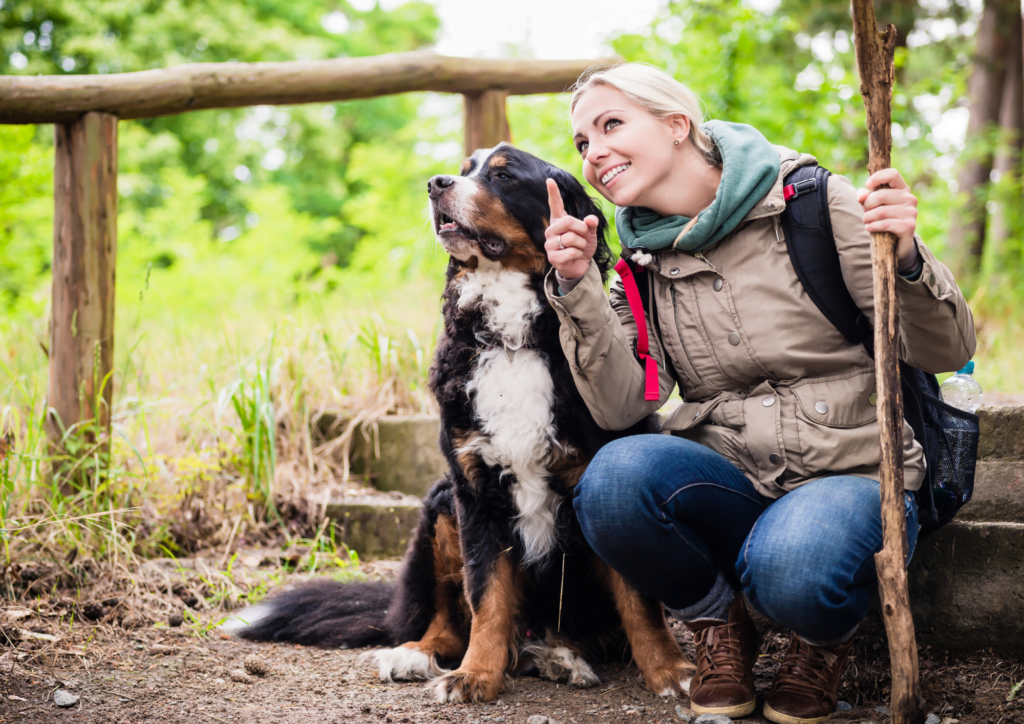
By equipping yourself with the knowledge and skills to administer first aid to your dog, you can be better prepared to handle unexpected situations and keep your canine companion safe during adventures. Remember, quick action and a calm demeanour are essential in providing effective first aid. Prioritise your dog’s well-being, and always seek veterinary care for serious injuries or concerns. With the right preparation and care, you and your furry friend can enjoy many more adventures together.
NOTE: All information is taken from the following sources: https://vcahospitals.com/know-your-pet/first-aid-for-dogs , https://www.rspca.org.uk/adviceandwelfare/pets/dogs/health/firstaid , https://bondvet.com/b/first-aid-for-dogs
Always consult with your Veterinarian.
Want to read more? Try this article about the scientific facts of why dogs are so cute




